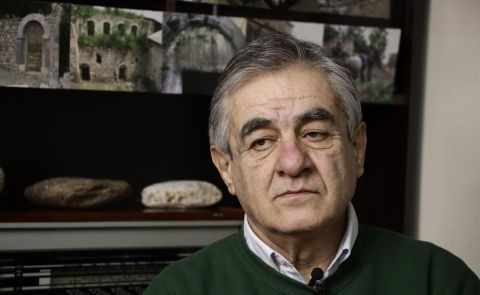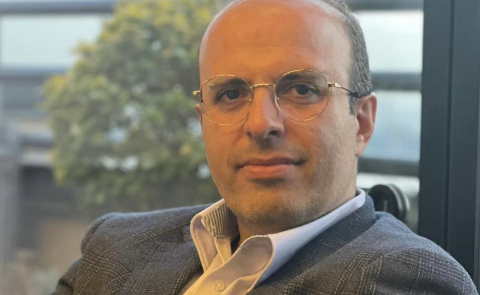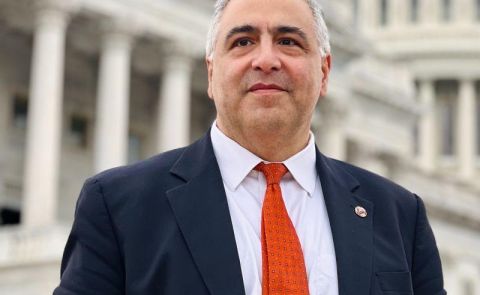
Dr. Uwe Halbach on the Ingush-Chechen Territorial Conflict

Dr. Halbach has been working for the research section for Eastern Europe and Eurasia at the prominent German think-tank SWP since 2001. His fields of research include the formation of national identities and statehood in the post-Soviet space - especially in the Caucasus and Central Asia; Secessionist conflicts in the Caucasus as well as Islam and Islamist movements in the post-Soviet space. (Dr. Halbachs numerous German publications are available at: https://www.swp-berlin.org/wissenschaftler-detail/uwe-halbach/)
Dr. Halbach, even if the territorial conflict between the two republics is currently flaring up, its history is rather long. Could you give our readers a historical overview to put the current events into context?
The current dispute over the demarcation between Chechnya and Ingushetia brings back a theme to the debates of the North Caucasus, which had been at the center of attention at the beginning of the post-Soviet period: ethno-territorial conflicts over controversial borderlines. In 1991, the Moscow Institute of Geography recorded a large number of disputes about (at that time) internal Soviet borderlines. Of these, over a third was located in the Caucasus. The background of the special situation in the North Caucasus was formed by factors such as controversial and often changed demarcations between national territorial units in the Soviet era, the formation of bi-national "hyphen" republics such as Chechnya-Ingushetia or Kabardino-Balkaria, the deportation of entire ethnic groups such as Chechens and Ingush 1943/44 and their return in the late 1950s in their former residential areas, in which members of other ethnic groups had been settled. The first violent conflict in post-Soviet Russia unfolded in 1992 between Ingush and Ossets about the national affiliation of the Prigorodny district near Vladikavkaz, the capital of the constituent republic of North Ossetia. Shortly thereafter, it was pushed into the background by the escalation of the conflict between Moscow and Chechnya, but is now being re-addressed in the context of the renewed border debate in Ingushetia. In Dagestan, in the context of the border agreement between the republic leaders of Chechnya and Ingushetia on 26 September, territorial disputes arising from the deportation of Chechens in 1944 and subsequent territorial changes are also being brought back to attention.
With regard to the recent border agreement between Chechnya and Ingushetia, it is essentially based on a 1993 agreement reached after the split between the two parts of the previously bi-national republic. The recent agreement had been preceded by incidents provoking warnings of escalation. In 2013, a clash occurred between security forces of both republics in the border area. In August 2018, there were clashes between Ingush villagers and a Chechen road construction column.
The Russian Constitutional Court in St Petersburg legally recognized the agreement on December 7, thereby contradicting the verdict of the Ingush constitutional court. What institutional role do the Russian central government and the Russian courts play in this regional conflict?
The opposing judgments of the constitutional courts at the regional and central level - the suspension of the agreement by the court in Ingushetia and its reaffirmation by the Federal Constitutional Court - again raise the question of the relationship between federal authority and the autonomy of national republics. For most Russian lawyers, the Constitutional Court of the Russian Federation is responsible for a legal dispute between two federal subjects. On the other hand, the chairman of the Constitutional Court of the republic saw the sovereignty of Ingushetia violated by the lifting of the court's demand for a referendum on the border agreement by the Federal Court.
What political position does Moscow hold regarding the agreement?
In the Russian media, this crisis has not been covered much. Several Ingush activists have traveled to Moscow to broadcast their protests to a wider audience on the TV channel Doshd '. If unresolved territorial disputes in the North Caucasus unfold again in the context of this movement, this would of course be a challenge for Moscow. Recently, this region has lost some of its importance in the perception of the Russian population, because the number of violent events in it since around 2013 has been significantly reduced. And these violent events, especially in the eastern part of the North Caucasus, had previously been caused by an Islamist underground that operated beyond the borders of the Republics. This had pushed ethnic-territorial disputes into the background.
In November there were major protests against the agreement in Nazran (Ingushetia). Why is the Ingush government under Junus-bek Jevkurov acting against the strong public opposition of its people and could you imagine that this will lead to long-term political instability in Ingushetia?
As already mentioned, the dispute over the border deal between Jevkurov and Kadyrov has re-addressed other unresolved territorial issues, such as those surrounding the Prigorodny Rayon in North Ossetia and the status of territories in Dagestan, which were settled by Chechens before 1944. So far, however, the current development is more likely to be seen as a domestic political crisis in Ingushetia, where above all the effort of the Republic leader Jevkurov in the deal with his Chechen counterpart is criticized; by protesters, by some officials, by the Muslim clergy, by the Constitutional Court of the Republic, etc. From that criticism the demand for a referendum was derived. Apparently, Jevkurov underestimated this reaction. It should be remembered that in contrast to authoritarian Chechnya - Kadyrov's "private state" - civil society is still quite active in Ingushetia and balances against authoritarian tendencies in political leadership. So far, the current dispute has not led to major acts of violence - which is remarkable considering the situation in the North Caucasus. Both sides, the Republic authorities and the protesters, have tried to avoid escalation. So the organizers of the protest rally in Magas on October 17 decided to suspend the protest until the end of the month. The republic government in turn accepted a request for demonstrations in early November. In the meantime, preparations have been made for the first World Congress of the Ingush People for October 30.
Many observers claim that it is Kadyrov who is responsible for the recent escalation. What do you think of Kadyrov's role in the conflict? Has Kadyrov enforced his ambitions with the agreement or do you think that he could raise further territorial claims in the region?
The opinions on who benefitted most in the deal of September 26 diverge. Some largely uninhabited lands, especially in the district of Sunsha, which belonged to Ingushetia, are now given to Chechnya to straighten the border. Ingush activists claim that there are cultural monuments of their ethnic group, even oil fields, on the affected land areas. Many commentators point to Ramsan Kadyrov's desire for expansion and his cross-border encroachments in the past. Oleg Orlov, the Caucasus expert of Memorial, for example, disagrees: Kadyrov here rather withdraws some territorial claims, which he had loudly proclaimed in previous years. In that respect, Ingushetia is not necessarily the loser.
Kadyrov also puts forth territorial claims in regards to Dagestan. In the context of his border agreement with Ingushetia, the issue of controversial settlements of Chechen populations in the neighboring republic, in particular the so-called Akkin-question and the issue of the restoration of the district of Auh, from which the ethnic group of Chechen-born Akkins had been deported in 1944, intensified. After their deportation, the district was dissolved. Much of its territory today belongs to the Novolaksky Rayon in Dagestan, a smaller part to the Khasavyurt Rayon. After the rehabilitation of the deportees in 1956 and the return of many Akkins to their homelands, the newly resettled ethnic groups were forcibly relocated. To date, however, there are tensions between the remaining Laks, Avars and Kumyks and the Chechen population, which calls for the re-establishment of the Auh-Rayon since 1990. If this district will be restored and be handed over to Chechnya, which has been a demand since 1990, it could provoke considerable unrest among the multi-ethnic population of Dagestan, the largest North Caucasian republic.
See Also


Irina Mamulashvili: Electoral Interference is a Playbook, not a Recipe

Giorgi Gakharia: The EU Should Engage Georgia Despite Its Democratic Backsliding

Peace or Capitulation? Shahverdyan on Armenia-Azerbaijan Agreement and the Nagorno-Karabakh Crisis

Ali Mousavi Khalkhali: Iran Will Avoid Conflict in the Caucasus

